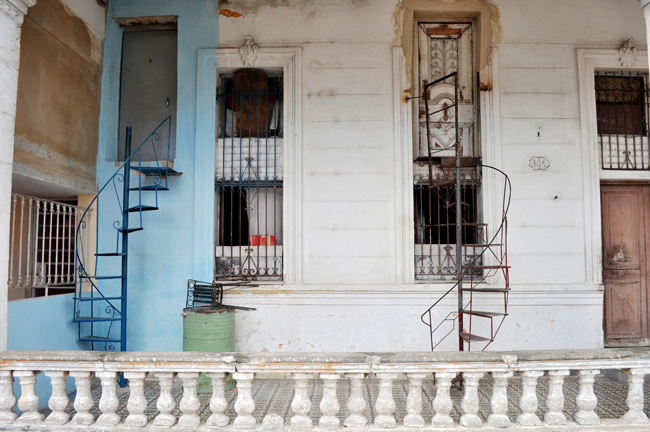Arquitectura de la Necesidad es un concepto con una doble función. Opera inicialmente como un término descriptivo y austero en su valor retórico que apunta a una arquitectura de la urgencia y la precariedad. Su segunda y más importante función es metafórica: enuncia una arquitectura que es su propio diagrama. La casa deviene una estructura que relaciona, un modelo físico que asocia al individuo y sus necesidades con los materiales, las tecnologías, los límites y posibilidades legales y económicas. Desde esta perspectiva la imagen Arquitectura de la Necesidad deviene estructural y programática.
He asociado estas construcciones vernáculas con las producciones naturales conocidas como estalactitas y estalagmitas, donde la forma es el resultado del movimiento fluido de los materiales atraídos por la fuerza de gravedad. En esta arquitectura el movimiento irreprimible de los materiales forma también un tejido de líneas y vacíos, una superposición de capas y estructuras, que como en los procesos naturales de sedimentación, se apoyan unas sobre otras. Este movimiento fluido responde a una fuerza tan poderosa e inevitable como la gravedad: la fuerza de la Necesidad.
El uso público del calificativo Arquitectura de la Necesidad en esta investigación se remonta al año 2002: Libro Objets Réinventés (Paris 2002), página 107, capítulo: Architecture de la Nécessité. El uso del término en los documentos generados por el proyecto están fechados en 1997.
…………………………………………………………………………………
I am using Architecture of necessity term as a metaphor. On the one hand it can be read as a descriptive term, austere in its rhetorical value, almost obvious. On the other hand, the term enunciates an architecture that is its self-diagram, and this image becomes structural and programmatic. I believe that architecture should be that. The home must be a structure of agreements. A factual connection between needs, materials, technology, urban regulations and social conditions.
Public use of the name Architecture of Necessity in this research goes back to 2002: Book Objets reinvent (Paris 2002), page 107, Chapter: Architecture of nécessité. However, the use of the term in the documents generated by the project are dated 1997.
Architecture of Necessity
The city’s inhabitants are aware of their real needs, driven by the inevitable, they transform their city under a new order: The Moral Modulor. He embodies the human potential to understand urgency and inscribe it in space. He adds, to the order established by human dimensions, the moral dimension that necessity recovers. Urgency provides for the individual a foundational alibi. Every sexual or physiological impulse, every birth and even death, will provoke the appearance of new walls, columns, stairways, new windows or plumbing and electrical systems.
Form follows Necessity. The modified houses of Havana express this relationship. It’s an Architecture of Necessity.
“Since necessity plays a central role in the generation and regulation of this kind of architecture, I associate it with natural forms known as stalactites and stalagmites, where the shape is the result of a fluid movement of materials attracted by gravitational force. In this popular architecture, the irrepressible movement of materials also produces a grid of lines and holes, a superimposition of layers and structures that, just as in the natural process of sedimentation, are supported one over the other. This fluid movement responds to a strength as powerful and unavoidable as gravity, the force of necessity.”
Ernesto Oroza from For an Architecture of Necessity and Disobedience, 2006.
He lived with his mother in a space that was so small that it couldn’t legally be considered a house. He expanded into the hallway, built a kitchen and refurbished the bathroom. He changed the status of the property and acquired a title for it. He got his hands on a permit to build on the roof, as he thought about moving out on his own. In order to do this he had to build an exterior stairway. He set to work on the structure indoors and started the paperwork to divide the property. The appearance of an exterior stairway before the process of dividing the house was finished could be considered a violation, and he could be fined or even lose all property rights to the house he had built.
He understood that the description of the house and its parts depends on the cultural understanding that we have of it, that laws depend on this understanding.
Then, what is a stairway? How does one describe it? Could he build a structure in front of his doorway that looks nothing like a stairway but serves the same function? Maybe just objects stacked in such a way that one can climb and descend them? Or an object by Ettore Sottsass, a stack that includes all of Feijóo’s books, a Franz West sculpture, anything?
He decided on a conceptual shortcut: he built the stairway and waited to be fined. In this way, he gained time. The Law demanded that he cease building the stairway until the paperwork needed to divide the property was finalized.
Years went by. He used the unfinished stairway.
What’s a finished stairway?
